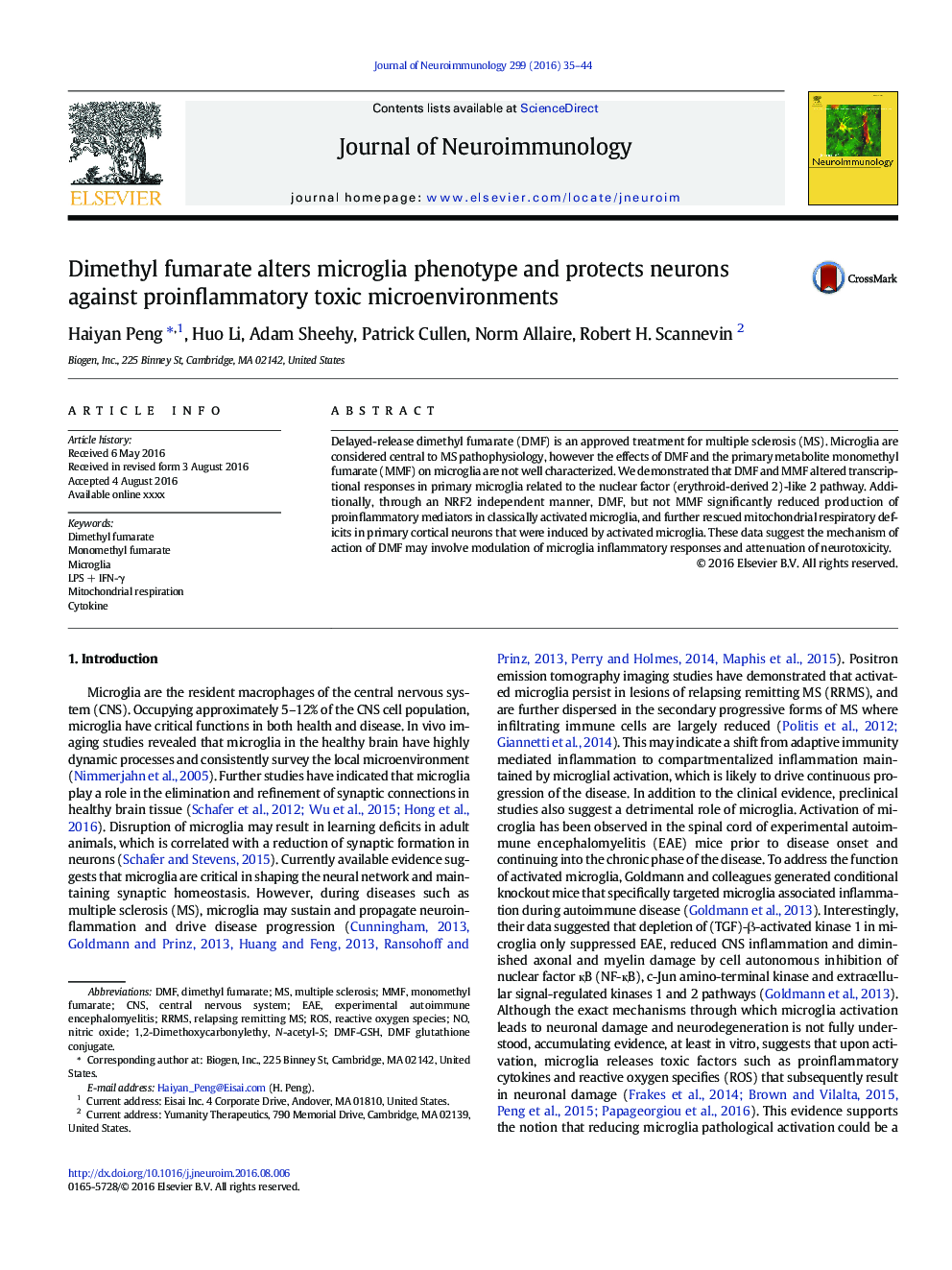| Article ID | Journal | Published Year | Pages | File Type |
|---|---|---|---|---|
| 3063787 | Journal of Neuroimmunology | 2016 | 10 Pages |
•Pharmacokinetic study provides evidence for direct brain exposure of dimethyl fumarates (DMF).•DMF, but not monomethyl fumarate (the primary metabolite of DMF) significantly decreases proinflammatory cytokine/chemokine and nitric oxide levels in classically activated microglia culture.•The inhibitory effect of DMF on cytokine is NRF2-independent.•DMF reduces the toxicity of classically activated microglia towards primary naïve neurons.
Delayed-release dimethyl fumarate (DMF) is an approved treatment for multiple sclerosis (MS). Microglia are considered central to MS pathophysiology, however the effects of DMF and the primary metabolite monomethyl fumarate (MMF) on microglia are not well characterized. We demonstrated that DMF and MMF altered transcriptional responses in primary microglia related to the nuclear factor (erythroid-derived 2)-like 2 pathway. Additionally, through an NRF2 independent manner, DMF, but not MMF significantly reduced production of proinflammatory mediators in classically activated microglia, and further rescued mitochondrial respiratory deficits in primary cortical neurons that were induced by activated microglia. These data suggest the mechanism of action of DMF may involve modulation of microglia inflammatory responses and attenuation of neurotoxicity.
Graphical abstractFigure optionsDownload full-size imageDownload high-quality image (76 K)Download as PowerPoint slide
